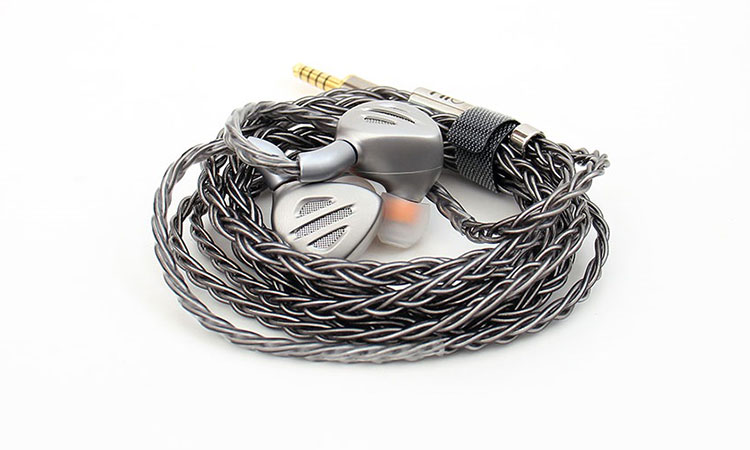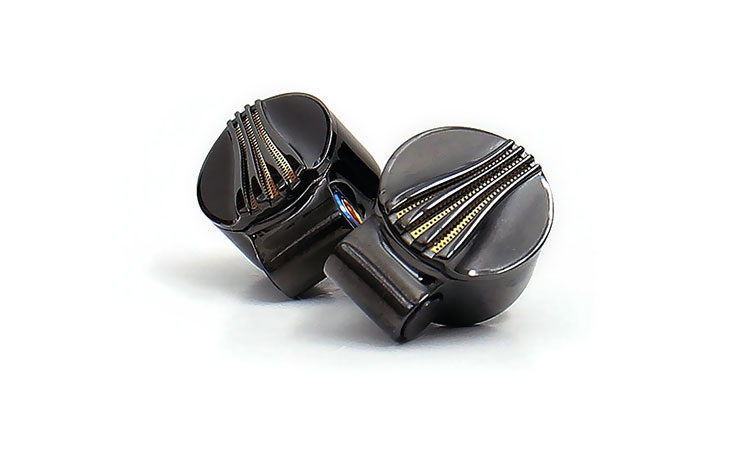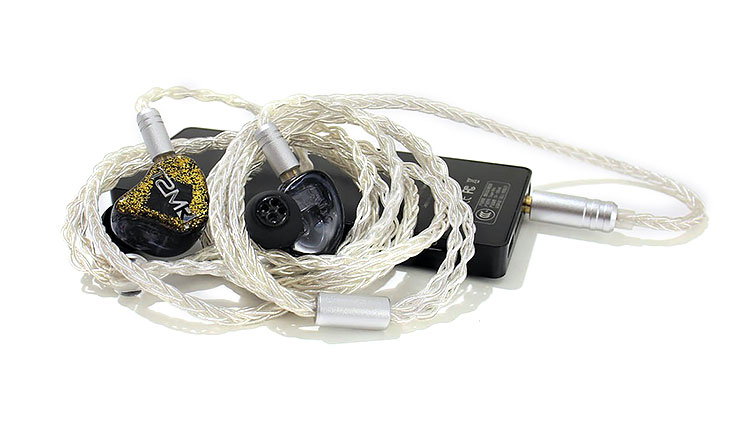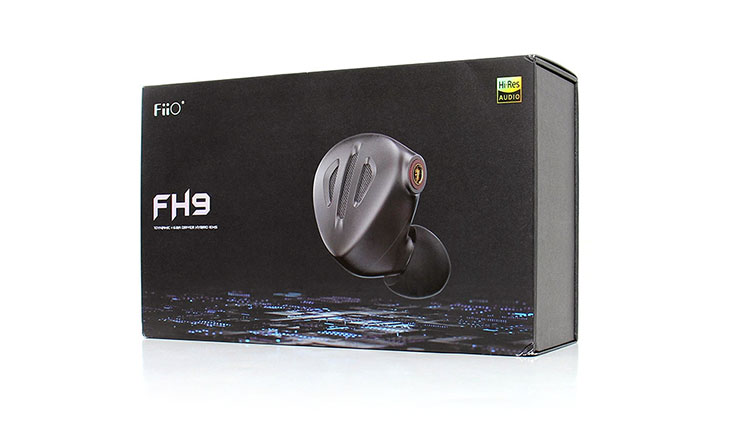Synergy
Efficiency
I would have assumed a higher amount of efficiency initially reading off the specs and it seems the 18 ohms need more power than a comparable 16Ω IEM in particular at the bottom levels of the volume knob which is actually a good trait to avoiding hiss caused by being too sensitive at low volume levels.
However, they can play loud with low power sources but upscale very well with added power also. They seem to like close to a watt and are optimal at around that power level or below that but there is no need to use high amounts of power either with these IEMs.
Pairings
What would I pair the FH9 with? Any good DAP will do or even a dongle DAC running off a phone would work out great and since as stated previously, the FH9 seems to be forgiving of poor sources so, I would say just use anything you have at hand.
They honestly have a very good ability to sound good with almost any source and need nothing special to do a good job at producing good sound quality. Just feed them a clean enough source, any source, and call it a day.
Select Comparisons
FiiO FD7
$629
Technical
The one true trick up the sleeve of the FD7 is the pure beryllium driver which is somewhat tricky to work with since it has a high toxicity level if the material is broken down, therefore, making these drivers precious gems which can only be worked on by expert hands.
Since beryllium is extremely rigid and resists flexing plus its extremely lightweight character puts it into the list of one of the best materials to use for audio speaker production.
Design
There are more tricks and patented designs within the FD7 design for sure. For example, the volcanic field system plus the acoustic prism are not implemented within the FH9 design to enhance the driver’s performance. Plus, did I forget to mention the pure beryllium driver and not just a coated cone?
Trickery aside, both designs are highly contrasting in many ways due to one having a single dynamic driver and the other having a hybrid 7 driver array plus the shell construction is very different.
Performance
Sound signatures also contrast in the way of purist versus fun. The FH9 has a fun tune with a slightly pronounced bass and even some forward highs while the FD7 remains clinical and more reference tuned in the sense that there is an absence of coloration.
The bass response from the FD7 is quite fast but sounds sometimes dry unless you tickle the driver with the boosting method of your choice. The easy-going character position belongs to the FD7 and the forward party animal aspect can be easier found on the FH9.
Both have a realistically large soundstage and both IEMs are very good at micro detailing and placement so I would say just toss the dice on that discussion. Some purists prefer a good single dynamic driver due to the absence of crossovers or filters which avoids overlaps and dips in driver crossover frequency transitioning points.
DUNU EST 112
$489
Technical
The FH9 and DUNU’s EST 112 have so much in common and lots of differences all at the same time. Both IEMs employ metallic shells that depend on texture over a painted or chemical finish for their appearance plus they share a hybrid design far as driver configuration.
Both models include a cable assembly with swappable plug ends and a versatile connectivity package but ear tip inclusion falls short compared to the 17 pairs FiiO included with the FH9.
The included storage cases also contrast here as well and the only other differences here are the inclusion of a large DUNU branded micro cleaning cloth and not much else.
Design
The major differences here are mostly with the high-frequency BA drivers. Their dynamic drivers are similar in that they exclusively produce bass but their size is also very similar with the FH9 edging out another .1mm in size.
Twin Sonion E stat tweeters were employed over Knowles custom drivers within the 4 driver EST 112 setup. The rest of the driver configuration is composed of the single 13.5mm dynamic driver along with a single custom Knowles midrange balanced armature.
Performance
When it comes to midrange production they both use similar driver configurations because although the FH9 has 2 BA drivers and the EST 112 has only one, the single BA inside the Land is actually a dual BA unit inside a single shell so it basically matches driver count internally and they seem to have similar sonic characteristics.
Most of the sonic differences here are in bass response and high frequencies. The bass response is most definitely flatter to my ears on the EST 112 and it seems more clinical but perhaps does gain a touch of speed and slap. High frequencies are both rather treble forward but a touch more so on the FH9.
TANSIO MIRAI Land
$599
Technical
At the same cost as the FH9, this sonic chameleon of an IEM is also a good candidate if you’re at the point of purchase and are unsure of what tonality and characters to look for because the TANSIO MIRAI Land has a set of DIP switches which changes its general tonality or at certain points of the frequency band.
The six driver configuration inside the TANSIO MIRAI Land consists of a more common and modest-sized 10mm dynamic driver, three BA Knowles drivers plus two EST tweeters which is one driver short of the seven driver configuration on the FH9.
Design
The shells sure contrast in design by employing resin shells which are highly polished and hand-finished with artistic end caps. Everyone I show the TANSIO MIRAI Land to says they either like them or dislike the yellow color scheme and I immediately reply with a correction comment that it’s gold-themed because it just sounds better, right?
The few things the TANSIO MIRAI Land lack is the included tip package which is only a seven-count plus the Land stock cable omits any other type of connectivity other than the conventional 3.5mm single-ended jack while the other sets in this comparison all have multiple connectivities with swappable tip setups.
Performance
The TANSIO MIRAI Land probably has the flattest bass response of the group all the way through its transition into the midrange but takes well to some elevation and I also recommend the user to flip the bass switch to the upper position as you might find the bass lackluster and subdued in stock form unless it meets you preference choice.
One peculiar aspect of the TANSIO MIRAI Land is that although EST tweeters tend to sound overpowering and fairly forward TANSIO did a good job at keeping these tweeters well behaved while still keeping a balanced and evenly represented range in the overall frequency spectrum.
This gives the MIRAI Land a warmer character overall compared to the rest of the IEMs in this lineup and it also remains more distant comparing their sounding stage.
The MIRAI Land has a peculiar and interesting soundstage in where the best imaging is found up in the upper frequencies while the bass remains centric as coming from a one-point source and finally the midrange can veer beyond the center stage and forward but not much so.
Our Verdict
The FiiO FH9 is an interesting flagship IEM that caters to the audiophile who wants a more aggressive and forward tuning and desires a large soundstage with good highs and great bass.
The accessories are plentiful and generous including one of FiiOs best stock cables to date with ample connectivity as always plus the IEM build quality itself is top-notch.
Perhaps some will find the shell design a bit humdrum in appearance but the sound quality is certainly not and makes up for it. Sound-wise it’s a punchy, bright and large sounding, and technically capable IEM.
The FiiO FH9 is definitely a very good IEM that is not shy to strut its stuff nor is it hissy, source fussy, and is comfortable playing at both high volume or low volume levels making it an easy IEM to recommend.
FiiO FH9 Technical Specifications
- Wearing Style In-ear IEM
- Frequency Response 10 Hz to 40 kHz
- Drivers 1 Dynamic, 6 Balance Knowles Armatures
- Impedance 18 Ohms
- Max Input Power 100mW
- Cable High-Quality Pure Silver Wire
- Cable Length Approximately 120cm
- Single Unit Weight 8 Grams






